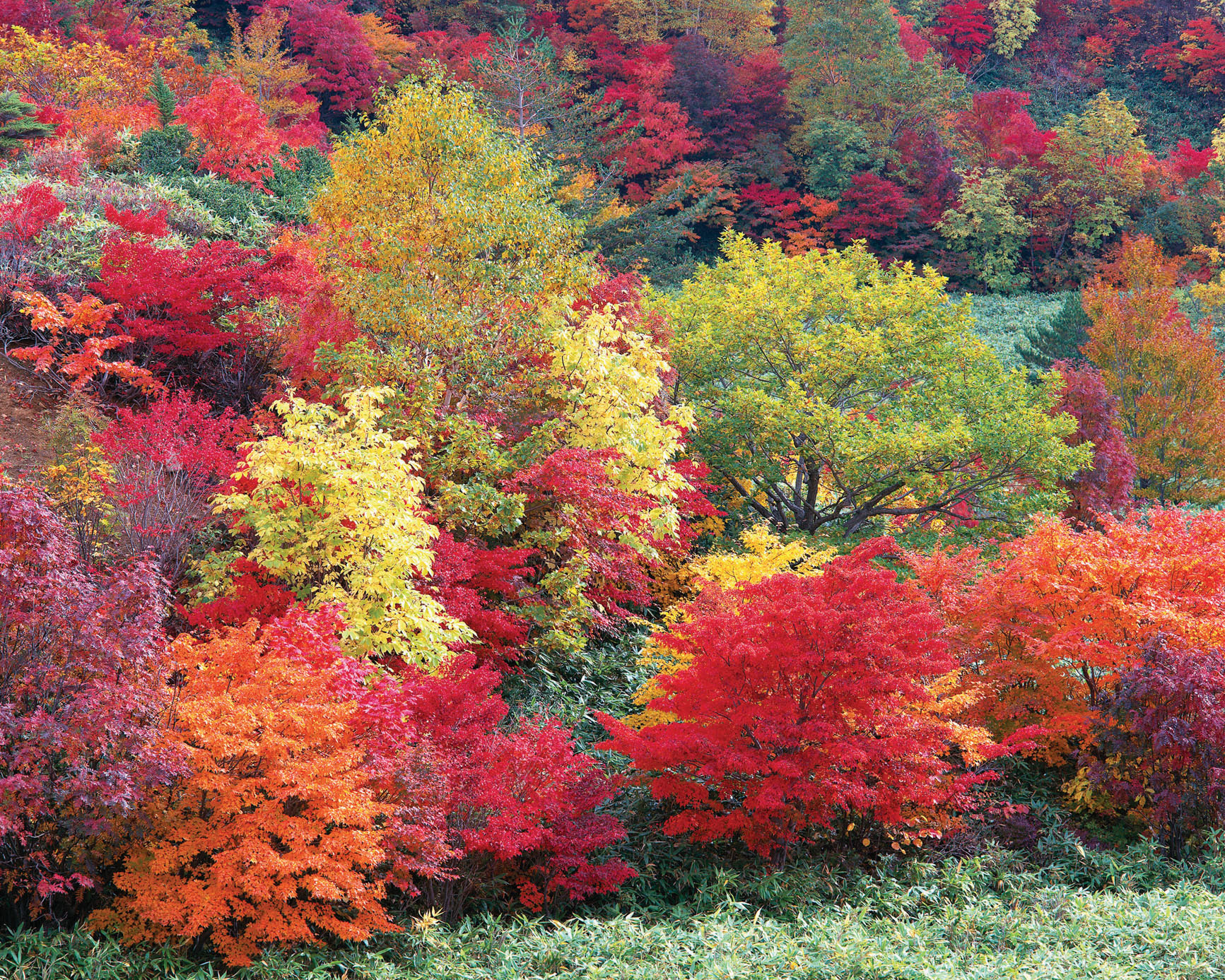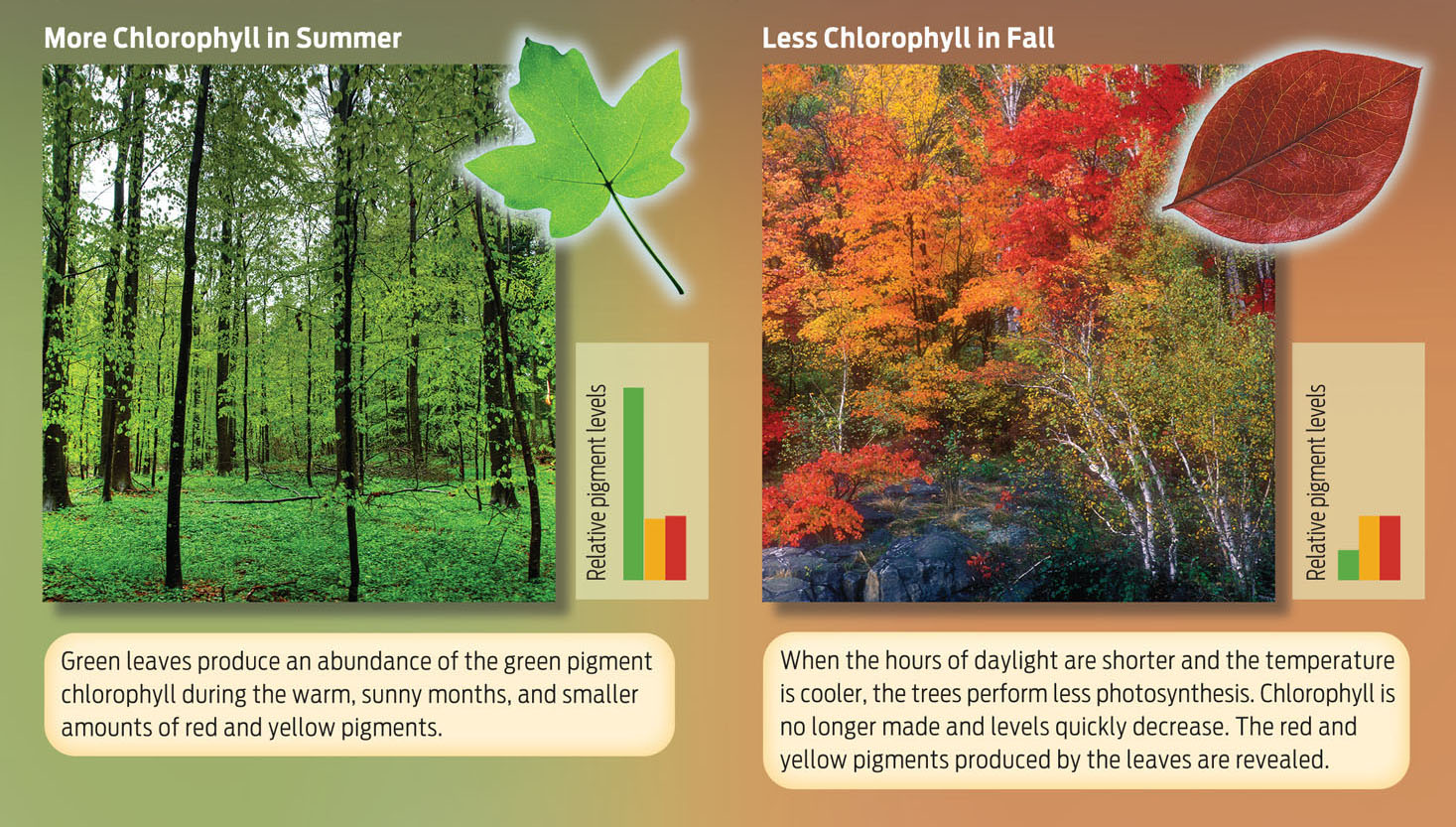 Why do leaves change color in the fall?
Why do leaves change color in the fall?
CHLOROPHYLL The dominant pigment in photosynthesis, which makes plants appear green.
ANSWER: For most of the year, leaves are photosynthesis factories, making sugar from sunlight, water, and carbon dioxide. A key component of the photosynthetic machinery is a pigment called chlorophyll, which absorbs red and blue wavelengths of light and reflects green wavelengths. Chlorophyll is the reason plants appear green. To keep photosynthesis running, plants make abundant chlorophyll in spring and summer. But they also produce a smaller amount of other pigments—yellow-reflecting xanthophyll and orange-reflecting carotene. In the leaves, these pigments capture additional wavelengths of light and therefore expand the range of light that is useful for photosynthesis. You can’t see these other pigments in leaves during spring and summer because leaves are chock full of green chlorophyll, camouflaging the other hues (although you can see them elsewhere in some plants: in the flesh of a pineapple, for example, or the taproot that is a carrot).
After a summer of intense sugar stockpiling, trees, bushes, and other deciduous plants that seasonally drop their leaves start to settle in for the winter and begin to shut down their photosynthesis machinery. During the winter months in temperate regions, there isn’t enough water to drive photosynthesis; water in the ground is frozen and can’t be absorbed. As temperatures cool, plants turn off the production of their light-absorbing pigments. Of all the pigments, chlorophyll is the most chemically unstable and therefore the shortest lived: levels fall quickly once production stops. By contrast, xanthophyll and carotene linger. As green fades, the other colors peek through—mostly yellow and orange, which have been there all along, but hidden.
The really intense colors—the fiery reds and deep purples—that some trees and bushes turn in autumn are the result of a fourth pigment, called anthocyanin. This distinctive chemical, which is the same one that gives apples and acai berries their color, is produced in leaves in response to high sugar concentration. Why does sugar concentration rise in the fall? To conserve water in winter, a tree develops a corklike membrane between the leaf stem and the branch, sealing off the leaf and preventing transpiration. This corky membrane also prevents phloem from transporting sugar out of the leaf. Unable to move out of the leaf, sugar begins to collect. The more sunny days there are in fall, the more photosynthesis occurs, the more sugar is made and trapped in the leaves. More sugar means more anthocyanin is produced, yielding the bright colors we associate with fall.

Some trees naturally produce lots of anthocyanin—maple and oak, for example—which explains why these trees produce such brilliant colors. Others, such as aspen and poplar, produce less anthocyanin and turn yellow or orange in fall (INFOGRAPHIC 32.5).
Leaves contain chlorophyll and other pigments. These pigments help capture a wide range of wavelengths of light to maximize the efficiency of photosynthesis.

Eventually the corky membrane that seals off the leaf from the tree causes the leaf to dry out. With a slight gust of wind, the leaf flutters to the ground. The tree is now prepared for winter.